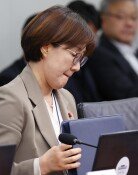Govn’t encourages medical trainees to apply for local and essential health services
Govn’t encourages medical trainees to apply for local and essential health services
Posted July. 12, 2024 08:09,
Updated July. 12, 2024 08:09

The South Korean government announced plans to reduce the number of normal beds in tertiary general hospitals nationwide by up to 15 percent over the next three years starting from this September. It also promised to provide greater support to tertiary general hospitals with prioritized care to critical and emergency patients; and more critical care beds ready. The aim of these initiatives is to encourage 47 tertiary general hospitals to faithfully serve the purpose of providing highly skilled treatments and operations to patients with critical and urgent issues.
Tertiary hospitals receive more rewards for treating more severe patients
The Ministry of Health and Welfare on Thursday held the fifth special committee meeting on medical reform to discuss ways to structurally reshape tertiary referral centers with a view to ensuring sustainability in the medical treatment system.
Patients with both mild and severe conditions flock from all over the nation to tertiary centers in the capital area including the top five Seoul-based university hospitals (Seoul National University Hospital, Severance Hospital, Seoul Asan Medical Center, Samsung Medical Center and Seoul St. Mary's Hospital). The preference for big medical centers over local clinics has made things hard on the local medical system and got in the way of tertiary centers properly treating critical and emergency patients.
The health ministry plans to make sure that tertiary hospitals keep focused on treatments and operations for severe and emergency patients. In fact, they have recently happened to prioritize cases requiring critical and urgent care since the current emergency care program was put in place following a medical care vacuum.
Govn’t considers renaming “tertiary general hospitals”
The government intends to review the naming of “tertiary general hospitals.” The category itself has been criticized for representing how hospitals are ranked and causing the concentration of patients to such big medical centers, thus failing to come across as facilities for patients requiring serious and highly skilled treatments.
The key to this pilot program lies in large-scale hospitals as they are subject to the initiative. The health ministry said, “Heads of tertiary hospitals told us that they would willingly join the program if undervalued medical services are priced higher even with a lower number of patients to be projected,” expecting to see participation rates not too low.
김소영 기자 ksy@donga.com







